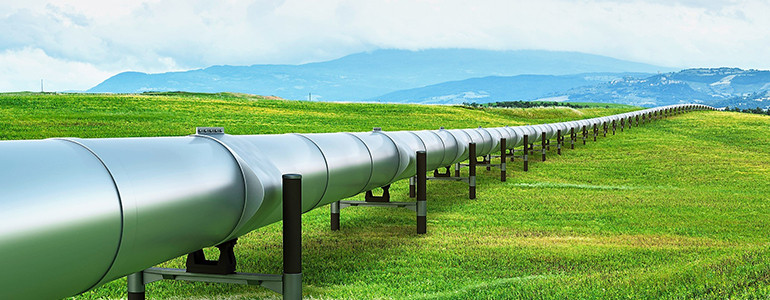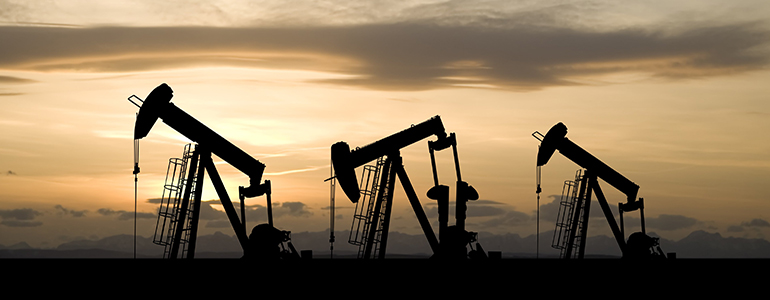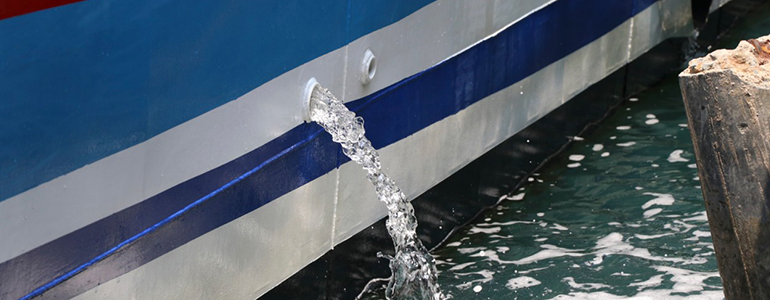Best Practices in
Pipeline Cleaning

Description
Pipelines carrying crude oil, especially those of small bore, not infrequently become at least partially blocked. Even if complete blockage is avoided, the loss of throughput due to flow resistance caused by the buildup of accretions on the walls of the pipeline can greatly degrade the maximum flow capacity of the line. These accretions usually result from the build-up of paraffin waxes and other high-melting point components of the crude stream (some of which can easily separate out, especially in cold weather) on the pipeline wall, together with scaling of the inner surface of the pipe due to corrosion.
Small-bore pipelines can best be treated while in normal flow mode – no shutdown is necessary, although there may be a slight advantage if a pipeline is already out of use. Smaller-bore lines such as those typically used for oilfield collection systems can also be treated in longer segments (e.g., between pumping stations) and when flowing oil.
Large-bore pipelines (e.g., 1 meter diameter) in effect, should be treated as a horizontal, cylindrical tank. Large-bore lines may need some post-treatment mechanical cleaning (which will now be much more effective due to loosened deposits), e.g., using a motorized mechanical “pig”, but the SWR treatment alone is usually sufficient.
Procedure
The SWR concentrate must be used diluted 1:10 in water (e.g., 100 gallons of SWR to 1000 gallons water) in a holding tank and then heated to 170-200 OF (77-93 OC). For this purpose, a mobile heater truck is recommended (readily available in the US). The line to be treated, if of large diameter, should be closed off in segments and treated as if it were a tank. It is important that the hot SWR solution fill the entire segment being treated and that it be circulated as vigorously as possible to ensure maximum turbulence.
For smaller-bore pipelines and, in some cases, larger ones, it has proven possible to clean pipelines on-line (while they are flowing oil) by simply injecting SWR at ambient or higher temperature (the higher the better) into the flow stream for a period, preferably at multiple points around the pipe. The mixture of oil and SWR solution must then be pumped into one or more large holding tanks at the end of the pipeline (as would normally happen anyway) to allow good separation of the water solution of SWR and debris (such as scale) from the pipe.
Disposal
Scale and other solid material falls to the bottom of the holding tank provided that flow in the line is sufficient to transport them that far. The supernatant oil is of pipeline quality (i.e., contains less than 1% water), separates sharply from the residual SWR solution after a fairly short holding period and is easily pumped off, preferably into a storage tank. The SWR-water bottom layer can be re-used or disposed of, with proper dilution, into waterways.
It is fully degradable and is non-toxic.
Product Recovery
SWR aggressively promotes the separation of the hydrocarbon phases from the cleaning solution, resulting in a hydrocarbon-free cleaning solution for recovery and recycling and a water-free hydrocarbon phase which, absent any other contamination (e.g., from non-SWR cleaning systems) can be re-blended with the crude stream or used elsewhere. The amount of oil recovered is typically 1-20 bbl per 1,000 U.S. gallons of SWR-water solution used.
Competing Products
There are no other products known to or tested by SWR that offer the performance and ease of use of SWR. Hydrocarbon-based systems, solvent-based systems and even those based on natural oils are often environmentally unfriendly and result in contamination of the recovered crude and paraffins. Neither these systems nor any other water-based system known to SWR offers the same combination of low cost, ease of use and environmental friendliness that is available with SWR.
Product Costs
Most competing products must be used in undiluted or only slightly diluted form while SWR is used at 1:10 dilution (slightly more concentrated solutions, but never more concentrated than 1:5, may be needed for removal of very severe deposits).
Other Benefits
SWR not only prevents oil/water emulsion formation but also destabilizes any existing emulsions. It also leaves a film on cleaned metal surfaces, that helps to prevent erosion formation and can also be painted, if needed.
Note
These use instructions are in the form of examples drawn from the actual use of SWR. Experience has shown that each use of SWR is unique to some degree and that a trained operator is necessary to obtain the best results.
(Consult your SWR Distributor for answers to specific cleaning solutions.)
Best Practices in
Sludge Pit Petroleum Recovery and Cleanup
 Description
Description
Sludge pits typically contain a semi-emulsified mixture of crude oil, water and miscellaneous solids (together with whatever else has been dumped in them – they are often used as unofficial and unauthorized waste disposal sites. Cleanup of a sludge pit requires as a minimum, efficient separation of oil, water and solids. The oil phase is then recombined with the crude stream. The water should be sufficiently clean (and especially hydrocarbon-free) to dispose of after proper dilution. The solids residue, after additional washing with SWR or any biological treatment that may be necessary, (depending on the origin and composition of the solids) should be clean enough to be used as land fill.
Addition of SWR to sludge pits has shown itself in field trials to be extremely effective in achieving all of these objectives although each application may require minimal experimentation on a small scale to define the optimum use conditions. SWR affords excellent separation of the oil and water components of sludge into two layers that can then be separated by mechanical skimming and promotes settling of solids to the bottom of the pit. From there, the solids can easily be removed after the supernatants liquid have been pumped off and easily stripped of any residual contaminants by re-washing with SWR. The SWR solution can be recycled until it is no longer effective with addition of replacement SWR, depending on the water level in the untreated sludge, since this creates a product dilution. Or, it can be disposed of. More SWR than the usual 1:10 formulation should be used in cases where the sludge has unusually high water content (>25%). Even at these higher concentrations, the effluent SWR solution is not harmful to aquatic species with proper dilution.
Procedure
The best approach is to circulate the sludge* using a suitable pump and holding tanks during which time it is blended with the appropriate amount of SWR. In most cases a heater and two tanks are needed. One tank to contained the separated (typically skimmed) oil and the second to separate solids from the SWR solution, a third, smaller tank in which the solids can be washed and if necessary treated biologically. Even more efficient separation of solids can be achieved by centrifuging, but this type of equipment is seldom readily available.
*If it will flow – some sludge contains too much solid material that can vary from spent catalyst to sand and scale.
The contents of the sludge pit should be circulated continuously. SWR is injected into the circulating stream at a rate sufficient to provide a total dosage of 2 bbl (about 110 U.S. gallons) of SWR to 1,000 bbl (56,000 US Gallons) of sludge. Heating may be desirable to reduce the viscosity of the sludge, which is often high due to suspended solids, especially in cold climates. The receiving tank should be set up to permit continuous skimming of the oil layer, which rises to the top and is transferred to the second receiving tank. The first tank provides both space and time for the solids to settle while the third permits washing of the solids before disposal in a landfill.
Product Recovery
About 90-95% of the oil or crude in the sludge pit will be recovered. Typically, 1,000 bbl of sludge will contain about 50% of crude or crude equivalent. Thus, 450-500 bbl of this should be recoverable. At current world crude prices, this is a substantial saving.
Competing Products
SWR is not aware of any equally effective or equivalent product value on the market. Several products from suppliers claim to facilitate sludge pit cleanup but are reportedly much less effective, much more costly and less environmentally friendly. Most allow only minimal recovery of usable hydrocarbons from the sludge.
Note
These use instructions are in the form of examples drawn from the actual use of SWR. Experience has shown that each use of SWR is unique to some degree and that a trained operator is necessary to obtain the best results.
(Consult your SWR Distributor for answers to specific cleaning solutions.)
Best Practices in
Tank, Tank Car, Tanker (Hold) and Container Cleanup
 Description
Description
Those listed are all similar in nature and in the treatment procedure required although the nature and the level of contamination may vary. Tanks and tankers used for crude oil storage and transportation represent the greatest challenge due to the greater accumulation of solids, Typically, these are paraffin waxes, scale and general dirt and or sand contained in the crude. Tank cars and tanks used for the transportation and storage of gasoline, for example, generally contain only scale and rust. In the case of crude oil, the solid residue after stripping off all of the hydrocarbons may need additional treatment (e.g., by a second wash or by biological methods such as land-farming or composting) before disposal in a landfill. Residues from gasoline or distillate tanks may be immediately disposable provided that they are hydrocarbon-free.
Procedure
The procedure used is similar to that for all uses of SWR. A diluted SWR solution (1:10 dilution) at 170-200ºF (77-93ºC) is used to pressure-wash the tank walls and floor using pumps and pressure hoses. Operators may require breathing equipment to protect them against hydrocarbon vapors.
Product Recovery
The resulting contents of the tank, which includes the material from floor and wall washing, are then pumped into a separate separation tank that permits settling of the solids and mechanical skimming of the hydrocarbon. The presence of SWR greatly enhances the separation. The separated hydrocarbon can be returned to use, typically by blending with a refinery crude stream, and the solids can be washed and/or treated biologically before final disposal.
Note
These use instructions are in the form of examples drawn from the actual use of SWR. Experience has shown that each use of SWR is unique to some degree and that a trained operator is necessary to obtain the best results.
(Consult your SWR Distributor for answers to specific cleaning solutions.)
Best Practices in
Bilges and Bilge Water Cleaning
 Description
Description
SWR has been shown to be extremely efficient in cleaning marine bilge water by removing oily contaminants prior to its discharge at sea. Most on-board bilge cleaning systems use skimmers or sometimes, mechanical separators to remove gross oil contamination from the top of the bilge fluids. The remaining fluid, which is still contaminated with oil, is then passed through oil/water separating filters that can easily become clogged with the viscous oil/water emulsion. Use of SWR will convert what is usually a multi-step inefficient system into a one-step process that does not require any of the conventional means of emulsion breaking e.g., acid washing. SWR promotes almost 100% separation of oil and water in the bilge with the result that simple skimmers can remove essentially all of the bilge oil. The residual cleaned bilge water can them be safely discharged at sea without fear of any threat to marine life. SWR is fully and quickly degradable even in cold marine waters.
Procedure
The water added to activate SWR maybe either fresh or saltwater. Thus preserving precious potable water stores.
A 1:10 mixture of SWR concentrate may be added directly to the bilge. SWR can be used to clean oily surfaces such as those in the engine room and the fuel bunker location. The wash solution including the oil stripped from the cleaned surfaces will find its way into the bilge. A natural motion of the ship when under way can provide sufficient circulation and mixing. The skimmers and if desired the oil/water separators can be operated without fear of operating difficulty.
Product Recovery
As described above, a simple skimming system is all that is required to recover oil from the bilges. The recovered oil may be used “as is,” it is typically pumped back into the fuel bunkers. Current separation costs will generally be reduced because filter maintenance will be greatly reduced and chemical emulsion breakers with their associated maintenance and environmental requirements will no longer be necessary.
Competing Products
No directly competing products are known. Current practice involves the use of oil/water separators and/or emulsion-breaking chemicals.
Note
These use instructions are in the form of examples drawn from the actual use of SWR. Experience has shown that each use of SWR is unique to some degree and that a trained operator is necessary to obtain the best results.
(Consult your SWR Distributor for answers to specific cleaning solutions.)
ADDITIONAL NOTES:
SWR has also proven to be a very effective general-purpose cleaner in industrial and marine applications. Because it presents no environmental hazard in normal use concentrations, it can be used (at 1:10 or sometimes even greater dilution) for such applications as surface cleaning in engine rooms, removing baked-on heavy oil deposits on poorly-maintained refinery equipment, and in old industrial facilities undergoing environmental remediation and even for cleaning crew quarters.
SWR is non-flammable and vapor free, offering enhanced safety in use relative to the normal hydrocarbon cleaners used in engine rooms and bunker areas on board ship and elsewhere.
SWR has proven to be very effective in removing PCBs from industrial and marine surfaces that have become contaminated with these dangerous compounds. The PCBs normally remain with the oil fraction and thus can easily be burned. Additional data are available from SWR.
SWR does not attack HAZMAT protective suits, even at full strength

